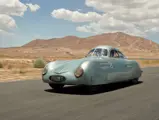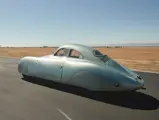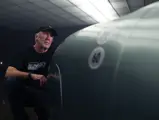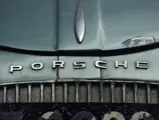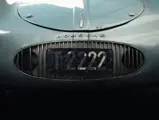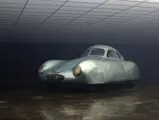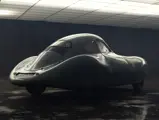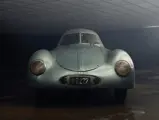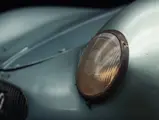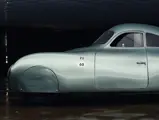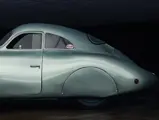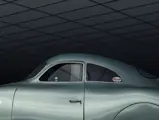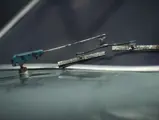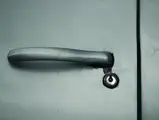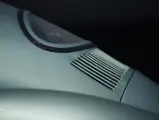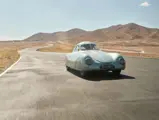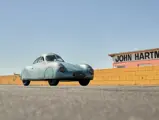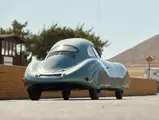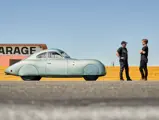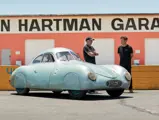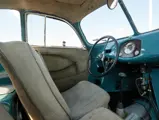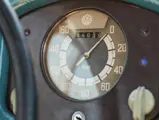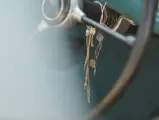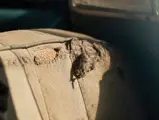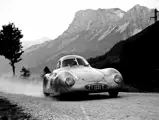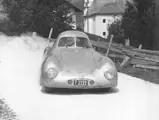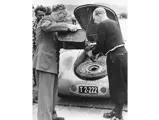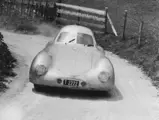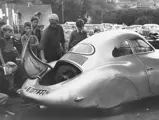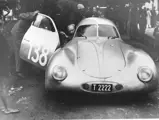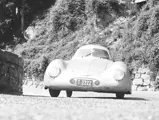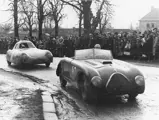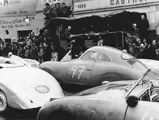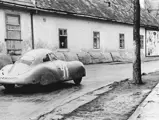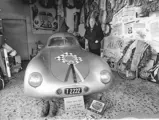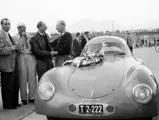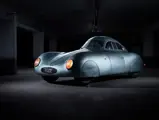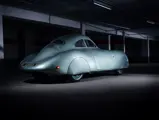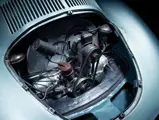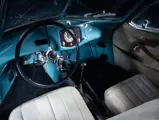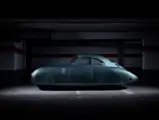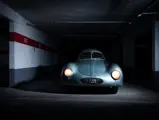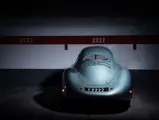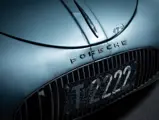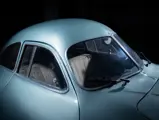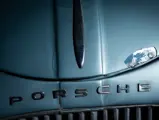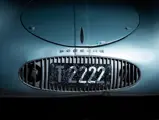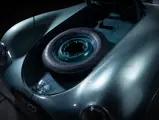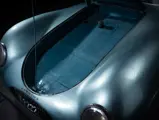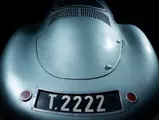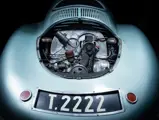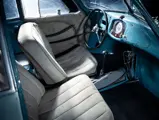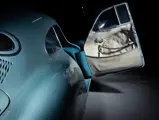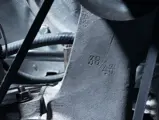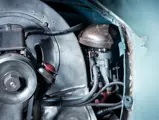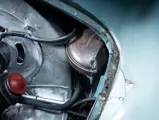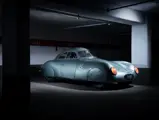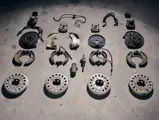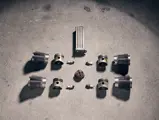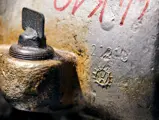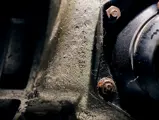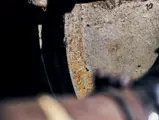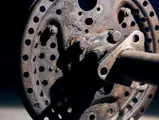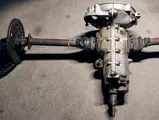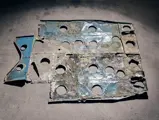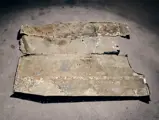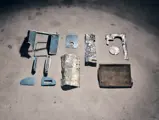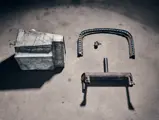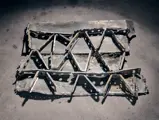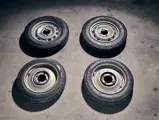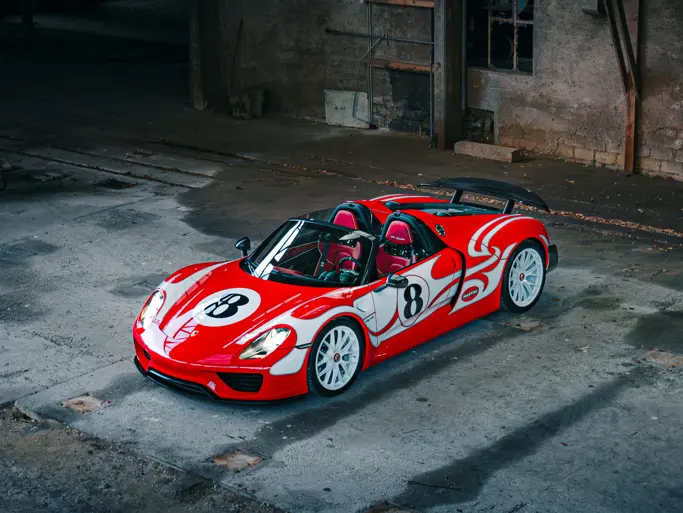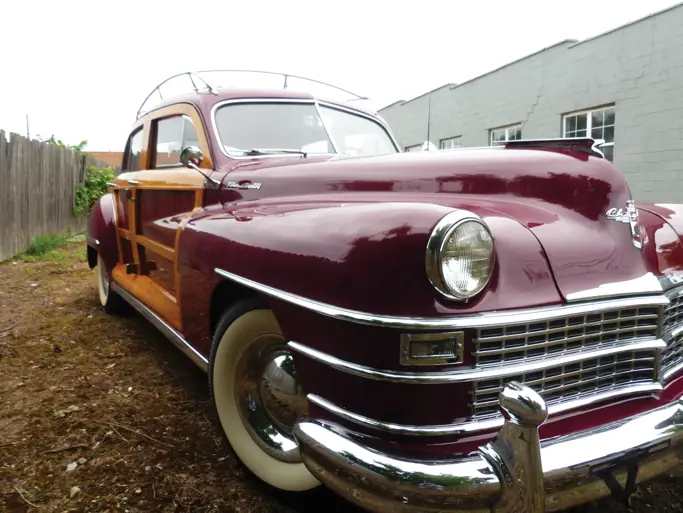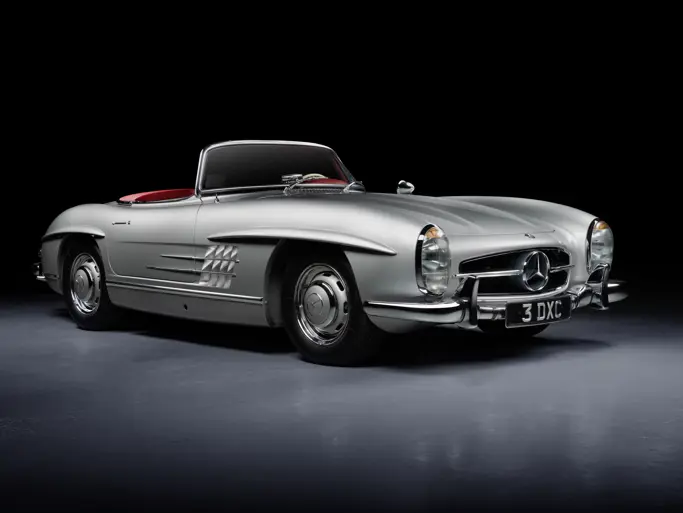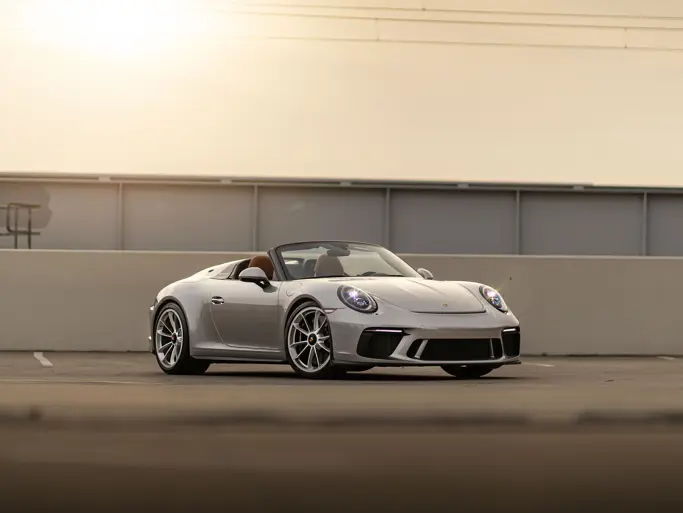Monterey 2019
1939 Porsche Type 64
{{lr.item.text}}
$19,000,000 - $22,000,000 USD | Not Sold
 | Monterey, California
| Monterey, California
{{internetCurrentBid}}
{{internetTimeLeft}}

- The antecedent of Porsche’s historical evolution
- The first and sole remainder of the three examples believed completed
- Personal car driven by both Prof. Dr. h.c. Ferdinand Porsche and his son Ferry Porsche
- The oldest car to ever wear Porsche’s iconic wide-font script badge
- Owned for 46 years by the successful private racing driver Otto Mathé
- Raced in Austria from 1949 to 1953; class win at the 1951 Austrian Alpenfahrt
- 70-year documented chain of three private owners since the Porsche family
- Sympathetically freshened to highlight its extreme originality
- Recently and thoroughly inspected by Porsche specialist Andy Prill
- The most historically important Porsche ever publicly offered
Please note that this lot is offered with a European title and not on a Bill of Sale, as listed in the printed catalogue.
A DREAM DEFERRED
There can be no disputing that Porsche is among the most important marques in post-war racing history, winning countless sports car and endurance events while developing one of the most celebrated model lines ever conceived. Even seasoned enthusiasts, however, have rarely considered the existence of a genetic forebear of the fabled brand that predated the first Porsche 356 by nearly a decade.
The heart and soul of the company’s fantastic history, of course, can be traced to the founder, Prof. Dr. Ferdinand Porsche. The eldest Porsche famously cut his teeth at Austro-Daimler and Mercedes-Benz before engineering some of the interwar era’s greatest rear-engine creations, including the dominant Auto Union race cars and, at the other end of the spectrum, the Volkswagen Type 1 Beetle.
Prof. Dr. Ferdinand Porsche was a fiery and uncompromising personality who regularly challenged corporate boards with difficult ideas, one of the reasons his résumé consisted of so many different stops. In September 1938, during his successful consultancy with the early state-run Volkswagen, Prof. Dr. Porsche proposed a sports car version of the Beetle, then known as the KdF-Wagen. As evidenced by Porsche design drawings, the Type 114 was imagined with three different displacements, highlighted by a mid/rear engine placement just ahead of the rear axle. A far cry from the state’s vision of a car for the common man, Porsche’s sports car was rejected by the Deutsche Arbeitsfront board, and the idea was shelved.
The Type 114 obviously made an impression, though—two weeks later Volkswagen itself commissioned Porsche to formulate a similar solution that would address the Beetle’s poorly performing narrow tires. VW had built several versions of the KdF already, including the military-grade Kübelwagen and Schwimmwagen, and the proposed sports car was to be the tenth different body design applied to the KdF’s Type 60 chassis. The concept was therefore dubbed the Type 60K10, though Porsche internally classified the project as the Type 64.
Under the supervision of Erwin Komenda, Karl Froelich drafted formal plans that were then developed into a wooden scale model, which was wind-tunnel tested at Stuttgart University by Josef Mickl. These same three Austrians had contributed to Porsche’s Auto Union grand prix cars and the KdF-Wagen. They would soon become major forces in the creation of the Cisitalia grand prix race car and Porsche’s own 356 and 550 models.
BERLIN TO ROME
Very similar in profile, the Type 114 and the Type 64 exterior drawings are easily recognizable as the basis of the Gmünd 356 coupe that was to follow, and therefore can be viewed as the earliest expression of Porsche’s singular design evolution. Despite this flurry of activity, both ideas seemed destined to remain in a draftsman’s file, were it not for the announcement in the spring of 1939 of a 940-mile road race from Berlin to Rome to be run that September. Several manufacturers lined up to compete in this public-relations showcase of the Axis pact, and Dr. Porsche accordingly received an order from the National Socialist Motor Corps (NSKK) to produce three Sport KdF-Wagen examples, and the Type 64 was resuscitated.
Though unconfirmed, it is believed that Reutter Karosserie was retained to build alloy coachwork for the Type 64, which featured a narrow two-seat cockpit, wheel spats front and rear, and a dual spare-wheel compartment under the front trunk lid (a contingency for the Beetle’s easily damaged tires). A split windshield and sliding-door windows completed the lightweight body, which was smoothly fastened to the outer skin in a series of more than 2,000 rivets.
As the third owner was impressed to discover, the Type 64’s build was more characteristic of contemporaneous aircraft specifications than anything commonly found on a Volkswagen Beetle. Though the chassis began with the KdF-Wagen’s basic layout of a steel-pressed backbone, it was modified in shape and flanked by rectangular tubular frames made of aircraft-gauge duralumin. To these frames were welded a floor pan and underbody made of lightweight alloy.
The standard 985 cc VW engine was rebuilt with dual Solex carburetors, larger valves, and higher compression, combining to develop 32–40 hp (substantially improving upon the standard factory output of 23.5 hp). A low curb weight of just 1,346 pounds helped the torquey motor deliver fast starts, as noted by several people who have driven the Type 64. With the first example completed in August 1939, the advanced race car would have been well on its way to a position on the Berlin-Rome starting grid had World War II not broken out within the following month.
THE WAR YEARS
As the property of Volkswagen, the first completed Type 64, chassis no. 38/41, was appropriated by Dr. Bodo Lafferentz, the head of the German Labour Front, although he damaged the car in an accident in 1939. In a board meeting in late September 1939, Ferry Porsche proposed that the company continue building the second and third cars for testing and experimentation purposes despite the race’s cancellation, and the second of the proposed three examples was completed three months later. This car surely suffered the most ignominious fate when, in the waning stages of the war, it was commandeered by members of the U.S. Seventh Army’s “Rainbow” division, who cut off the roof and drove the resulting “cabriolet” into the ground, leaving it as scrap after blowing the engine.
In June 1940 the third body was completed but apparently not mounted on any chassis until after Lafferentz’s accident in the first car. At this point 38/41 was repaired at Porsche. Corroborating this account is correspondence from Mathé to Porsche of numerous concerns with the Type 64 after he purchased it. These complaints accurately refer to the damage sustained in the accident and the subsequent repairs made by Porsche. Regardless, 38/41 would become the sole surviving example of the three planned cars, and it lives on today as proudly offered here.
For much of the remainder of the war, this Type 64 was used by Prof. Dr. Ferdinand Porsche in his travels around Germany as one of the regime’s most important engineers. He was regularly chauffeured by his driver, Josef Goldinger, from his home in Zell am See and once made a trip from Berlin to the Volkswagen headquarters in Wolfsburg, during which the car averaged an impressive 83 mph. By 1944 Germany was relocating most of its war production infrastructure to escape the wrath of the Allied bombing campaign, and Dr. Porsche’s eponymous workshop was famously moved to Gmünd, Austria, and his Type 64 along with it.
In the power grab that immediately followed World War II, Prof. Dr. Ferdinand Porsche was imprisoned by French authorities who sought to exploit war criminal charges in the name of underlying political agendas. The professor’s son, Ferry Porsche, assumed control of the company and use of the Type 64 as his own personal car. Ferry Porsche continued to drive it regularly after the war, especially for bouts between Zell am See, Gmünd, and Stuttgart. Legend has it that he once drove his mother from Zell am See to Gmünd over the highest Austrian mountain pass, Grossglockner, after which she praised the excellent seating in the car.
The now one-of-a-kind race car was entwined in the company’s nascent history, as the younger Porsche sought capital to post bail for his father’s release. This was accomplished by assuming a lucrative contract to build a grand prix car for Cisitalia. Porsche’s resulting bond with the local Austrian racing scene was to lead to the Type 64’s impressive post-war life, which included 46 years of single ownership.
P O R S C H E
In 1947, with the Type 64 in need of some attention as Ferry’s personal transportation and the face of the young company, it was decided to refresh the car’s body, a task that was entrusted to none other than Pinin Farina. After the engine was rebuilt at Gmünd headquarters, it is believed that Ferry Porsche himself applied a new wide-font scripted badge of the Porsche name to the car’s nose, creating the blueprint for the iconic marque script that exists to this day.
In July 1948, just prior to a local race at Innsbruck, Ferry Porsche made a public demonstration of his 356 roadster—the famous Porsche Number 1—to help promote the company’s new sports car model. The Type 64 was used as a chase car and was seen closely following the 356. One of the contestants of the race, a well-known Austrian private racing driver and lubricant producer named Otto Mathé, took notice. Mathé had enjoyed racing motorcycles in the 1920s and early ’30s until a bad accident in 1934 left him without the use of his right arm. The fierce competitor refused to quit racing, however, and switched to motor cars, driving hand-tuned specials to numerous class wins across Austria during the 1950s. His exploits behind the wheel would go on to inspire a younger generation of Austria’s drivers, as later noted by Jochen Rindt and Niki Lauda, who considered Mathé a childhood hero.
Mathé was smitten with the Type 64 during his encounter with it, and in 1949 Porsche agreed to sell him the car. To accommodate shifting with his left hand, the privateer converted the Porsche to right-hand drive and initially modified the engine’s displacement so that he could race in the 1,100 cc class. He also replaced the Volkswagen-based cable-braking components with a hydraulic system sourced from a Fiat. After retiring early at the Austrian Alpenfahrt (a two-day rally of 800 miles through Tyrolean Alpine roads) in 1949, the Type 64 returned to the event in 1950 and emerged with a roaring class win.
Less successful attempts at the 1951 Austrian Alpenfahrt prompted Mathé to install a 1.3-liter engine in 1952, and in this guise the car performed admirably at various rallies during the 1952 season, including the Strassenrennen and the Gmündner-Berg-Rennen. In combination with the performance of his other race cars, Mathé racked up an impressive 22 victories during the 1952 season.
From 1953 onward the Austrian driver increasingly preferred a Carrera-powered special called the Fetzenflieger, and the Type 64 received a mild restoration before becoming the centerpiece of Mathé’s personal museum at Innsbruck. Despite several attempts by the increasingly successful Porsche company to buy the Type 64 back for heritage purposes, Mathé could never be tempted to sell the car. Both Ferry Porsche and his legendary PR man Fritz “Huschke” von Hanstein negotiated between 1957 and 1964 with Otto Mathé to get the car for the newly built Porsche Museum. More than 40 original letters on file provide evidence of their attempts to buy or even exchange the car for a 356 or 904 Porsche. As later reported in the April 1989 issue of Excellence magazine, he even began referring to the important Porsche as der Ahnherr, or “the ancestor.”
DER AHNHERR
Mathé only rarely publicly presented the Type 64 toward the end of his four-plus decades of ownership, notably bringing the coupe to Monterey in 1983 for exhibition at Pebble Beach and a run with the Porsche Parade at Laguna Seca. In 1995, after 46 years of ownership, the stalwart competitor Mathé passed away, and after two years of estate settlement, the grandfather of all Porsches was finally sold to its second private owner.
The Type 64 passed into well-deserving hands, as the new owner, Dr. Thomas Gruber of Vienna, is a very respected marque enthusiast, having written a dedicated volume about the original 911 Carrera RS model. Dr. Gruber commissioned a sympathetic restoration that stressed originality, and the aged finish was gently preserved with all its shades of original silver accented with hues of blue and green patina. After the mechanicals were refreshed, the car participated in the Austrian Ennstal Classic in 1999 and 2001, the Kaiserstrasse and Kottingbrunn rallies in 1999, and the Goodwood Festival of Speed in 1998 and 2003.
In 2008 the Type 64 was sold to the consignor, a dedicated enthusiast with one of the largest car collections in Germany. The car has continued to benefit from careful preservation and attention as needed under his custody. This includes the incredibly well-preserved interior that even retains the very seat fabric on which Ferdinand and Ferry Porsche previously sat. Furthermore, and most important, the original engine was kept by Otto Mathé until his death and was saved by a friend of the family, who later sold the engine to the present owner. That engine, no. 38/43, was properly overhauled and reunited with 38/41.
In preparation for the current important offering, the coupe was inspected by marque expert Andy Prill, who concluded, “I’ve seen countless special Porsches in my career, but nothing like this. I was very careful in examining the authenticity of the Type 64 and its chassis. After spending many days with the car, I have found evidence that all key components of the car are original as built in 1939/1940. This is the most historically significant of all Porsche cars, and it is simply incredible to find the oldest Porsche in this original condition.”
Publicly offered for the first time in its long history, this remarkable Type 64 is the ancestor of all Porsches, and one can easily discern its resemblance to the marque’s evolution through the years, right up to today’s 911 model range. The extremely important coupe is documented with a full history, with bibliography by German automotive author Hans-Karl Lange, including design drawings, period photographs, factory documents, and incredible correspondence between Ferry Porsche, Huschke von Hanstein, and Otto Mathé. It offers an unparalleled opportunity to acquire the holy grail of Porsches, a pre-war relic of inestimable value to the Zuffenhausen cognoscente.

